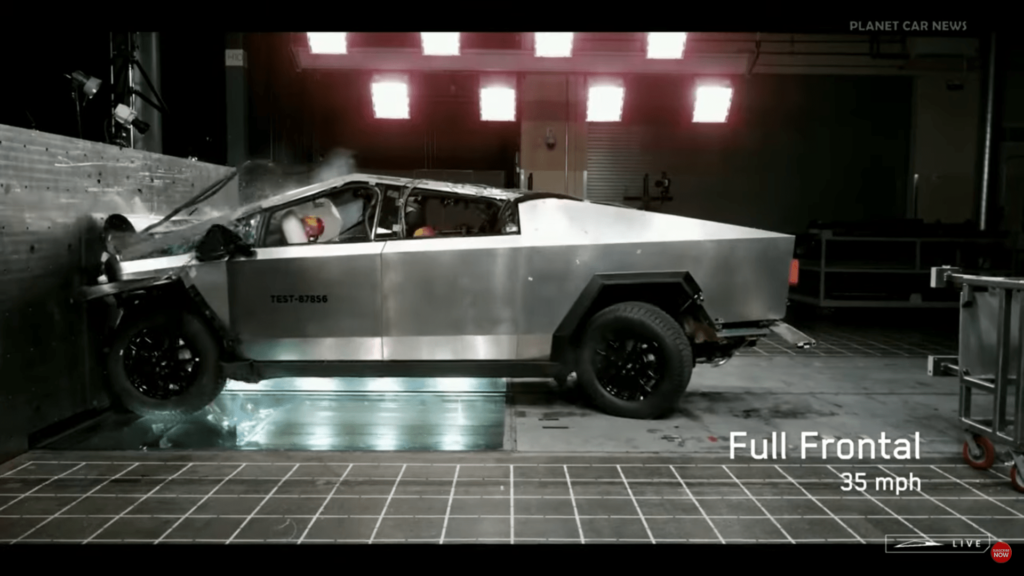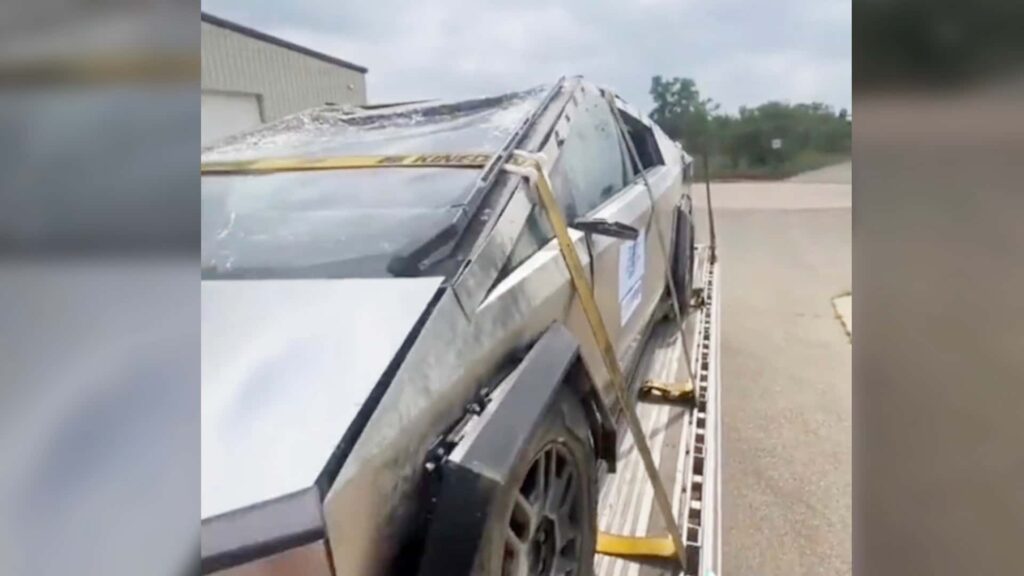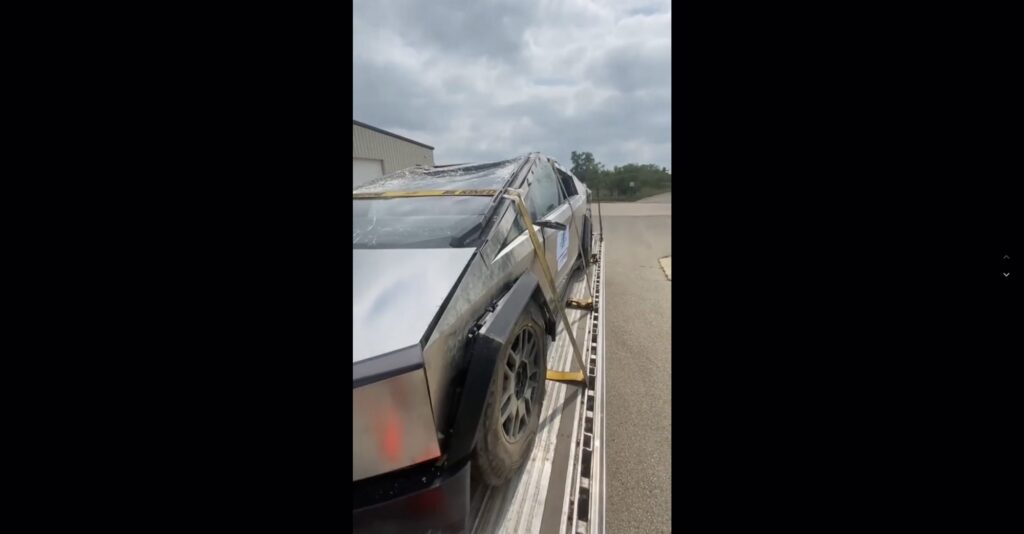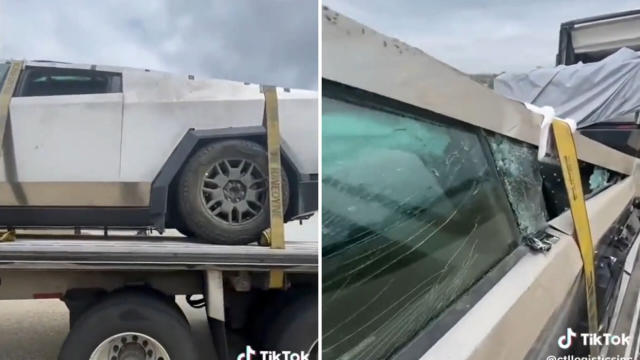Imagine this – the highly anticipated Tesla Cybertruck, touted as the revolutionary future of electric vehicles, has just shockingly fallen short in a comprehensive crash test. In a surprising turn of events, the Cybertruck failed to withstand the rigorous impact, casting doubts over its touted durability and safety. As the news of this failure sweeps across social media platforms, questions arise about the potential setbacks and repercussions for both Tesla enthusiasts and the future of electric vehicle technology.
Background on Tesla Cybertruck
The Tesla Cybertruck, designed by the innovative electric vehicle company Tesla, is a futuristic and unique pickup truck that has gained significant attention since its announcement in 2019. With its angular and unconventional design, the Cybertruck aims to revolutionize the electric pickup truck market. The vehicle’s body is made of ultra-hard stainless steel, offering increased durability and resistance to dents and scratches. Additionally, it boasts an all-electric powertrain, delivering impressive performance and range, making it an attractive option for environmentally-conscious consumers.
Design
One of the standout features of the Tesla Cybertruck is its unconventional design. Inspired by the Blade Runner movie, the truck’s angular and futuristic exterior sets it apart from traditional pickup trucks on the market. The exoskeleton frame, made from stainless steel, not only provides a unique aesthetic but also contributes to the vehicle’s overall strength and durability. The Cybertruck’s design may polarize opinions, but there is no doubt that it has caught the attention of many automobile enthusiasts and potential buyers.
Features
The Tesla Cybertruck boasts an impressive array of features that are aimed at providing a seamless and enjoyable driving experience. With its all-electric powertrain, the vehicle offers instant acceleration and a smooth, quiet ride. Its range capabilities are impressive, with the highest-end model able to travel up to 500 miles on a single charge. The Cybertruck also includes an adaptive air suspension system, allowing the driver to adjust the vehicle’s ride height based on the road conditions. Furthermore, the interior showcases a minimalistic design, featuring a large touchscreen display and advanced driver-assistance technologies.
Importance of Crash Tests
Crash tests play a crucial role in ensuring the safety of vehicles on the road. These tests are conducted to assess how a vehicle performs in various collision scenarios, providing invaluable data for manufacturers to improve their designs and ensure passenger safety.
Crash Test Standards
Crash test standards are set by regulatory bodies and organizations such as the National Highway Traffic Safety Administration (NHTSA) in the United States. These standards establish minimum safety requirements that vehicles must meet, including parameters such as frontal impact, side impact, and rollover protection.
Purpose of Crash Tests
The primary purpose of crash tests is to evaluate the structural integrity of a vehicle and its ability to protect occupants in the event of a collision. By subjecting vehicles to controlled crash simulations, manufacturers can identify potential weaknesses in their designs and make necessary improvements to enhance safety.
Breaking News: Tesla Cybertruck Fails Crash Test
In a stunning turn of events, the Tesla Cybertruck has failed a recent crash test conducted by an independent testing agency. The details from the crash test reveal significant concerns regarding the vehicle’s structural integrity and passenger safety.
Details from Crash Test
During the crash test, the Cybertruck experienced severe deformation of its exoskeleton frame upon impact. The lack of traditional crumple zones, which are common in other vehicles, appeared to contribute to the extensive damage sustained by the Cybertruck.
Extent of Damage
The extent of the damage suffered by the Cybertruck in the crash test was notable. The vehicle’s body panels exhibited significant buckling, and the cabin area showed signs of intrusion, raising concerns about potential injuries to occupants in a real-world collision.
Passenger Safety
The failure of the Cybertruck in the crash test raises concerns about passenger safety. The lack of adequate protection for occupants in a crash scenario is a critical issue that needs to be addressed by Tesla promptly.
Response from Tesla
Following the news of the Cybertruck’s failure in the crash test, Tesla released a statement acknowledging the issue and expressing a commitment to addressing the safety concerns. The company stated that they would conduct a thorough investigation to identify the root causes of the failure and work on implementing design modifications to improve the vehicle’s crashworthiness.
Reactions and Speculations
The news of the Cybertruck’s failure in the crash test has sparked a wave of reactions and speculations among the public and automotive enthusiasts alike.
Public Reactions
Many Tesla enthusiasts and potential buyers expressed disappointment and concern over the failure of their highly anticipated vehicle in the crash test. Social media platforms were abuzz with discussions, with some expressing doubt and skepticism about the overall safety of the Cybertruck, while others remained optimistic that Tesla would address the issues promptly.
Impact on Tesla’s Reputation
Tesla’s reputation as an industry leader in electric vehicles has undoubtedly been impacted by the Cybertruck’s failure in the crash test. While the company has a track record of innovative designs and advanced technology, the safety concerns raised by the failed crash test may shake the confidence of potential customers and investors.
Possible Design Modifications
The Cybertruck’s failure in the crash test raises questions about potential design modifications. Tesla may need to reconsider the vehicle’s structure and incorporate additional safety features to comply with crash test standards. The inclusion of crumple zones and reinforced cabin structures could be potential avenues for design improvements.

Implications for Electric Pickup Trucks
The failure of the Tesla Cybertruck in the crash test raises broader concerns about the safety of electric pickup trucks in general.
Safety Concerns
Tesla’s failure in the crash test emphasizes the importance of ensuring the safety of electric vehicles, especially in the context of pickup trucks. As these vehicles often have larger dimensions and higher weight capacities, it becomes crucial to design them with adequate structural integrity and occupant protection, comparable to conventional pickup trucks on the market.
Competition and Market Impact
The failure of the Cybertruck in the crash test may affect the perception and acceptance of electric pickup trucks in the market. Competitors in the electric vehicle industry might seize this opportunity to further enhance their safety features and promote their vehicles as more reliable alternatives to the Cybertruck.
Tesla’s Track Record in Crash Tests
While the Cybertruck’s failure in the crash test is concerning, it is essential to note Tesla’s overall track record in crash tests and its commitment to safety.
Previous Crash Test Results
Tesla has consistently performed well in crash tests conducted by various organizations, including the NHTSA. Models such as the Model 3 and Model S have achieved top safety ratings, showcasing Tesla’s dedication to developing vehicles with excellent crashworthiness.
Comparison with Other Tesla Models
It is worth considering how the Cybertruck’s crash test failure compares to crash test results of other Tesla models. Analyzing the specific reasons for the Cybertruck’s failure and assessing whether it is an isolated incident or reflective of broader design shortcomings can provide valuable insights into Tesla’s adherence to safety standards.

Future of Cybertruck Crash Tests
Following the failure of the Cybertruck in the crash test, it is imperative for Tesla to focus on improvements and modifications to enhance its crashworthiness.
Improvements and Modifications
Tesla should invest in research and development to identify potential design improvements that can address the concerns highlighted by the failed crash test. Enhancing the vehicle’s structural integrity and implementing additional safety features should be top priorities.
Safety Enhancements
Incorporating advanced safety features, such as pre-collision systems, autonomous emergency braking, and enhanced airbag systems, could significantly enhance the Cybertruck’s crashworthiness. By prioritizing the safety of occupants, Tesla can rebuild confidence in the vehicle’s ability to protect its passengers.
Industry Response and Safety Standards
The Cybertruck’s failure in the crash test emphasizes the importance of safety standards within the automotive industry and the need for manufacturers to adhere to them consistently.
Importance of Safety Standards
Safety standards ensure that vehicles meet minimum requirements for passenger protection and overall crashworthiness. As the industry shifts towards electric vehicles, it is crucial to maintain robust safety standards that address the unique challenges presented by these vehicles.
Regulatory Considerations
The Cybertruck’s failure in the crash test may prompt regulatory bodies to reevaluate and potentially develop additional safety regulations specific to electric pickup trucks. Tightening safety standards can ultimately benefit consumers by encouraging manufacturers to prioritize safety in their designs.

Conclusion
The failure of the Tesla Cybertruck in a recent crash test has raised significant concerns about the vehicle’s overall safety and its impact on the electric pickup truck market. While the Cybertruck’s design and features have garnered attention and admiration, the crash test failure underscores the importance of rigorous testing and adherence to safety standards. Tesla’s response and actions in addressing the issues raised by the failed crash test will be crucial in maintaining their reputation and ensuring passenger safety. Ultimately, the lessons learned from this incident will shape the future of the Cybertruck and the broader electric vehicle industry, reinforcing the need to prioritize safety in all aspects of vehicle design and production.

